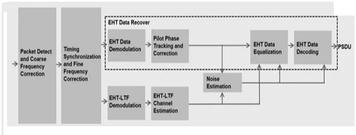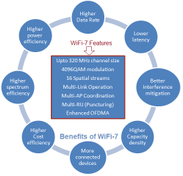
UWB Tutorial: Basics, Working, and Applications
Learn about Ultra Wideband (UWB) technology, including its working principles, modulation schemes, benefits, specifications, and diverse applications.
Showing 20 posts (Page 20 of 22)
Advertisement

Learn about Ultra Wideband (UWB) technology, including its working principles, modulation schemes, benefits, specifications, and diverse applications.

Compare Ultra-Wideband (UWB) and WiFi technologies based on standards, frequency, accuracy, range, data rates, security, and other critical parameters.

Explore the key differences between UWB and Zigbee technologies. Learn their standards, frequencies, range, bandwidth, data rates, and applications.

Explore vehicular wireless communication (V2V, V2I, C2C, C2I), its standards, and technologies for Intelligent Transport Systems (ITS).
A comprehensive list of Vector Signal Analyzer (VSA) manufacturers and suppliers, essential for testing wireless technologies like WiFi, LTE, and more.

Explore the distinctions between VLC and LiFi technologies, focusing on spectrum, speed, applications, and standards in wireless communication.

Explore whether voice calls are possible using LoRaWAN technology. Discover its limitations and why it's designed for low-data-rate applications, not real-time voice communication.

Explore the benefits and drawbacks of Voice over WiFi (VoWiFi), including cost savings, network offloading, and limitations like lack of E-911.
Prepare for your VSAT job interview with these frequently asked questions and detailed answers covering VSAT technology, components, applications, and future trends.
Explore key WCDMA terms like CDMA, frame structure, bands, UARFCN, and technologies like HSDPA and HSUPA. This guide simplifies wireless communication concepts.

Understand WCDMA/UMTS OVSF codes for channel separation, focusing on their properties and usage in minimizing interference and enabling variable data rates.

Explore the Wi-SUN FAN architecture, its features, and the advantages it offers for IoT applications, including smart cities and AMI metering.

A comparison of Wi-SUN, LoRa, and NB-IoT technologies for IoT, covering their key differences in frequency, data rate, latency, and applications.

Explore the pros and cons of WiFi 6 (802.11ax), including increased data rates, improved efficiency, and potential drawbacks.

Explore the WiFi 7 MAC layer advancements, including multi-link operation, enhanced MU capabilities, and frame structures for efficient AP and STA communication.

Explore WiFi 7 Multi-Link Operation (MLO) for increased data rates, lower latency, and improved reliability. Learn about MLO modes, architecture, and benefits as per the IEEE 802.11be standard.

Explore the WiFi 7 physical layer (PHY) with a block diagram of transmitter modules for Access Points (APs) and Stations (STAs). Key enhancements and differences explained.

Explore WiFi 7 (IEEE 802.11be), its key features like 320 MHz channels, 4096 QAM, MU-MIMO, and Multi-Link Operation, and the benefits it offers over previous WiFi generations.

A WiFi USB adapter allows devices to connect to WiFi networks. It enables wireless data exchange, extending connectivity to devices without built-in WiFi.

Explore WiMAX technology: its features, standards (802.16), architecture, and applications. Learn the differences between fixed and mobile WiMAX and its comparison with WiFi.
Advertisement